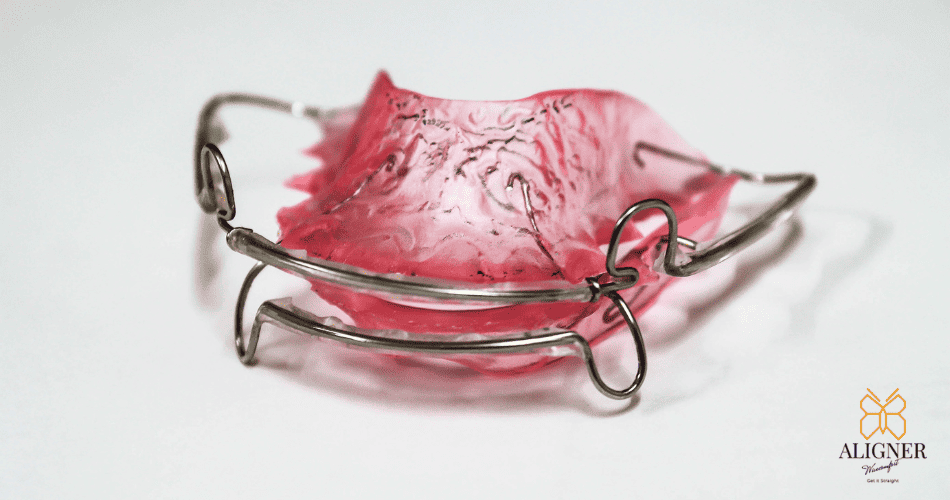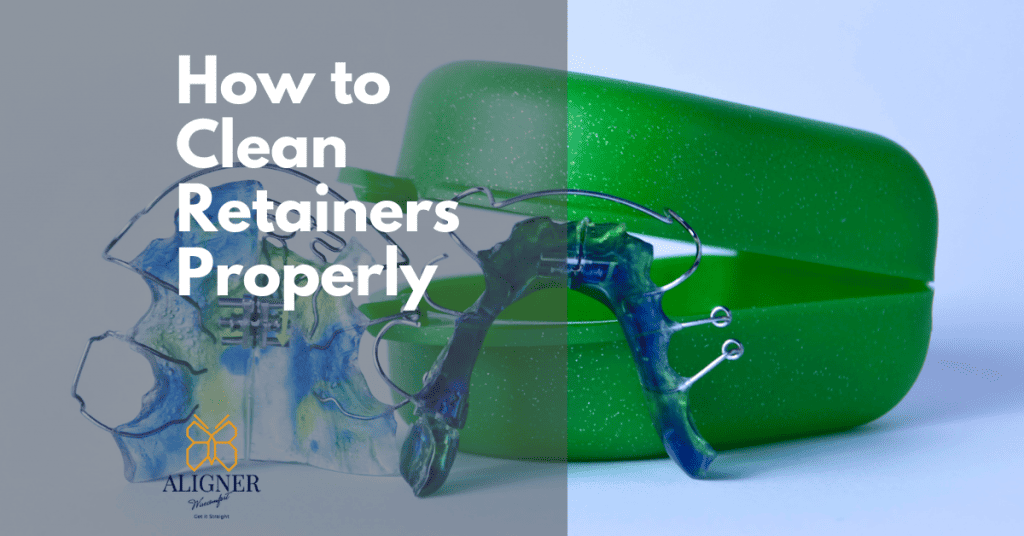Your retainer is designed to fit comfortably within your mouth. Therefore, the food that you eat and the plaque that forms on your teeth can accumulate on your retainer. Maintaining the cleanliness of your retainer is just as important as maintaining the cleanliness of your teeth by brushing them. Find out how to properly clean retainers and how often this should be done.
Why Should You Use a Retainer?
When your braces are taken off, your teeth will require additional support to remain in their new positions. Your orthodontist will most likely recommend that you wear a retainer after treatment to assist reduce mobility. After having your braces taken off, you will probably need to continue wearing the retainer that can be removed from your mouth.
The movement of your teeth is a natural process that occurs throughout your life. The movement of your teeth can be caused by a variety of activities, including speaking, swallowing, chewing, and biting. Even while nothing will completely halt the movement of your teeth, retainers can be helpful if they are used in the correct manner.
It is possible that you will need to wear your retainer for anything from 12 to 23 hours every single day. This indicates that there is a high potential for bacteria to grow on your retainer.

The Various Forms That Retainers Can Take
There are many different kinds of retainers, including the following:
- Hawley retainers are detachable retainers composed of a rigid substance and wire. They are named after its inventor, Hawley.
- Clear Essix retainers are a type of detachable retainer that is constructed from a material that is see-through.
- Permanent retainers, also known as permanent retainers, are glued to the inside surface of the teeth on the tongue side. These retainers are made to fit the patient specifically. Only your orthodontist is allowed to put them in and take them out of your mouth.
Fun fact: According to the findings of one study, participants who wore transparent Essix retainers were more likely to have plaque and tartar (dental calculus) formation than those who wore Hawley retainers.

The Proper Way to Wash a Retainer
- To clean your retainer, brush it. After you’ve finished eating, you should wash your retainer in some warm water. Remember to brush your teeth. Brushing your retainer should be done with a separate toothbrush and done gently.
- It is also possible for you to clean your retainer by using a very small amount of mild dish soap.
- It is best to use a cotton swab. In addition to this, you can use a cotton swab to clean the crevices and fissures of your retainer.

How to Perform a Thorough Cleaning on a Retainer
There are a few different approaches you can take to thoroughly clean your detachable retainer. Have a conversation with your orthodontist about which type of retainer will work best with your teeth.
-
Baking soda water
You can give your detachable retainer a thorough cleaning by soaking it in a solution of baking soda and water. If you have a Hawley retainer, you should avoid soaking it for an excessive amount of time or too frequently. It’s possible that the baking soda solution will cause the metal elements of your retainer to rust. Since an Essix retainer does not contain any metal parts, it is safe to soak it in the baking soda solution for longer periods of time and on a more regular basis. -
Cleansing agents for dentures
Denture cleaners are another option for you to clean your unclean retainer on a twice-weekly basis. A denture cleaner should be mixed with water and placed in a small container. Rinse your retainer. Spend the next twenty minutes soaking it in the denture cleansing solution. Rinse your retainer. After that, let it soak for twenty minutes in mouthwash that does not include alcohol.
Cleaning Procedures for Fixed Retainers
It is not possible for you to remove your permanent retainers in order to clean them. However, you should clean your fixed retainers in the same way that you clean the rest of your teeth, which is by flossing and brushing them.
It can be challenging to floss around a permanent retainer in your mouth. It is possible that you will find it helpful to make use of dental floss or floss threaders that are specifically intended for retainers. Additionally, a water flosser might come in handy.
Because you can’t remove your permanent retainers to give them a thorough cleaning, you should also schedule exams and cleanings with your dentist on a regular basis.
The following products are highly recommended by cleaning experts for use on retainers:
- Warm water
- Cotton swabs
- Dish detergent
- Polishers for the teeth

The following are some cleaning products that should be avoided.
- Toothpaste
Using regular toothpaste could cause the surface of your retainer to become scratched. Because of this, bacteria may come on to it. Make a paste out of baking soda and water in the same proportions as you would for toothpaste. To clean your retainer, scrape it with this paste. - Either boiling water or extremely high heat
You shouldn’t put your retainer in boiling water or wash it with hot water either. The plastic components of your retainer are susceptible to heat, which can permanently distort their shape. After that, you might find that your retainer has to be replaced. - Bleach
This chemical is too harsh for your retainer, and there is a chance that it will become damaged as a result. - Alcohol
Steer clear of any cleaning products that include alcohol. Consuming alcohol can hasten the drying out of your retainer.
When should you clean your retainer, and how often should you do it?
The recommendation from dental professionals is that you should clean your retainer at least once every day. You should probably also give it a thorough cleaning once a week using an antibacterial denture cleaner. This should eliminate any microorganisms that may be on your retainer.
Why It’s Important to Consult with a Dentist for a Personalized Treatment Plan
It is important to note that while Aligner WiseComfort can be a great option for some individuals seeking orthodontic treatment, it is not a one-size-fits-all solution. It is highly recommended to consult with a professional dentist to obtain an individualized treatment plan that takes into account the unique aspects of your dental situation. While Aligner WiseComfort may be able to address certain issues, the end outcome may not be the same as that of traditional braces or other orthodontic treatments. By consulting with a professional dentist, you can gain a better understanding of all your options and make an informed decision about the best course of treatment for your smile.
Book an appointment
Check to See if They’re Right for You!
When you use clear braces like our Aligner WiseComfort’s aligner to straighten your teeth, you get a lot of benefits. You can straighten your teeth quickly and easily while brushing them, eating, and drinking as usual. You’ll feel better about your teeth and smile as you slowly straighten them without people noticing you are using an appliance because it is almost invisible…!!
It is clear that benefits of invisible braces could help you to achieve your perfect smile with all the 9 advantages provided over traditional metal braces.
Looking to straighten your teeth without pain and not sure which is better options? You can book an appointment online 24/7 or contact us today!


